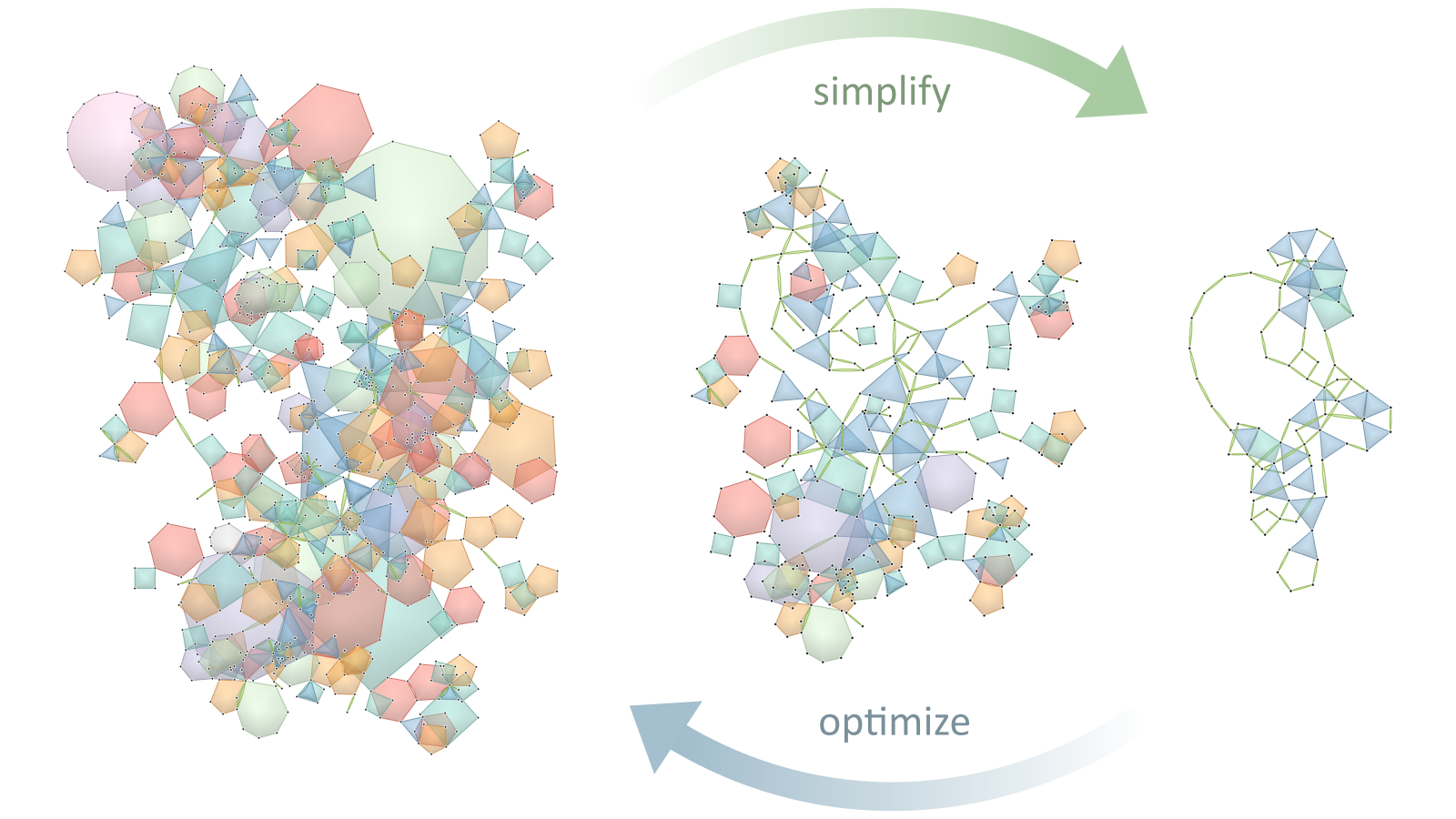Scalable Hypergraph Visualization
Peter D Oliver, Eugene Zhang, Yue Zhang
DOI: 10.1109/TVCG.2023.3326599
Room: 105
2023-10-25T05:45:00ZGMT-0600Change your timezone on the schedule page
2023-10-25T05:45:00Z

Fast forward
Full Video
Keywords
Hypergraph visualization, scalable visualization, polygon layout, hypergraph embedding, primal-dual visualization
Abstract
Hypergraph visualization has many applications in network data analysis. Recently, a polygon-based representation for hypergraphs has been proposed with demonstrated benefits. However, the polygon-based layout often suffers from excessive self-intersections when the input dataset is relatively large. In this paper, we propose a framework in which the hypergraph is iteratively simplified through a set of atomic operations. Then, the layout of the simplest hypergraph is optimized and used as the foundation for a reverse process that brings the simplest hypergraph back to the original one, but with an improved layout. At the core of our approach is the set of atomic simplification operations and an operation priority measure to guide the simplification process. In addition, we introduce necessary definitions and conditions for hypergraph planarity within the polygon representation. We extend our approach to handle simultaneous simplification and layout optimization for both the hypergraph and its dual. We demonstrate the utility of our approach with datasets from a number of real-world applications.